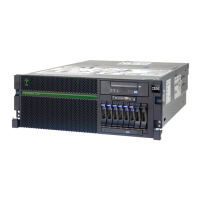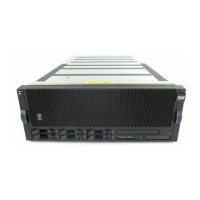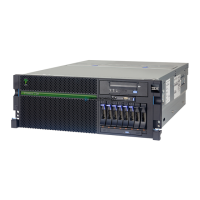Chapter 3. Virtualization 137
A possibility is to migrate partitions back and forth between POWER6, POWER6+, POWER7
and POWER7+ processor-based servers. Partition Mobility uses the POWER6 or POWER6+
Compatibility Modes that are provided by POWER7 and POWER7+ processor-based servers.
On the POWER7+ processor-based server, the migrated partition is then executing in
POWER6 or POWER6+ Compatibility Mode.
If you want to move an active logical partition from a POWER6 processor-based server to a
POWER7+ processor-based server so that the logical partition can take advantage of the
additional capabilities available with the POWER7+ processor, use the following steps:
1. Set the partition-preferred processor compatibility mode to the default mode. When you
activate the logical partition on the POWER6 or POWER6+ processor-based server, it
runs in the POWER6 or POWER6+ mode.
2. Move the logical partition to the POWER7+ processor-based server. Both the current
and preferred modes remain unchanged for the logical partition until you restart the
logical partition.
3. Restart the logical partition on the POWER7+ processor-based server. The hypervisor
evaluates the configuration. Because the preferred mode is set to default and the logical
partition now runs on a POWER7+ processor-based server, the highest mode available is
the POWER7+ mode. The hypervisor determines that the most fully featured mode that is
supported by the operating environment installed in the logical partition is the POWER7
mode and changes the current mode of the logical partition to the POWER7 mode.
Now the current processor compatibility mode of the logical partition is the POWER7 mode,
and the logical partition run on the POWER7+ processor-based server.
The Virtual I/O Server on the source system provides the access to the client resources and
must be identified as a mover service partition (MSP). The Virtual Asynchronous Services
Interface (VASI) device allows the mover service partition to communicate with the hypervisor.
It is created and managed automatically by the managed console and will be configured on
both the source and destination Virtual I/O Servers, which are designated as the mover
service partitions for the mobile partition, to participate in active mobility. Other requirements
include a similar time-of-day on each server, systems must not be running on battery power,
and shared storage (external hdisk with reserve_policy=no_reserve). In addition, all logical
partitions must be on the same open network with RMC established to the managed console.
The managed console is used to configure, validate, and orchestrate. You use the managed
console to configure the Virtual I/O Server as an MSP and to configure the VASI device.
A managed console wizard validates your configuration and identifies issues that can
cause the migration to fail. During the migration, the managed console controls all phases
of the process.
Support of both processors: Because POWER7 and POWER7+ use the same
Instruction Set Architecture (ISA), they are equivalent regarding partition mobility, that is
POWER7 Compatibility Mode supports both POWER7 and POWER7+ processors.
Tip: The following web page offers presentations of the supported migrations:
http://pic.dhe.ibm.com/infocenter/powersys/v3r1m5/index.jsp?topic=/p7hc3/iphc3p
cmcombosact.htm

